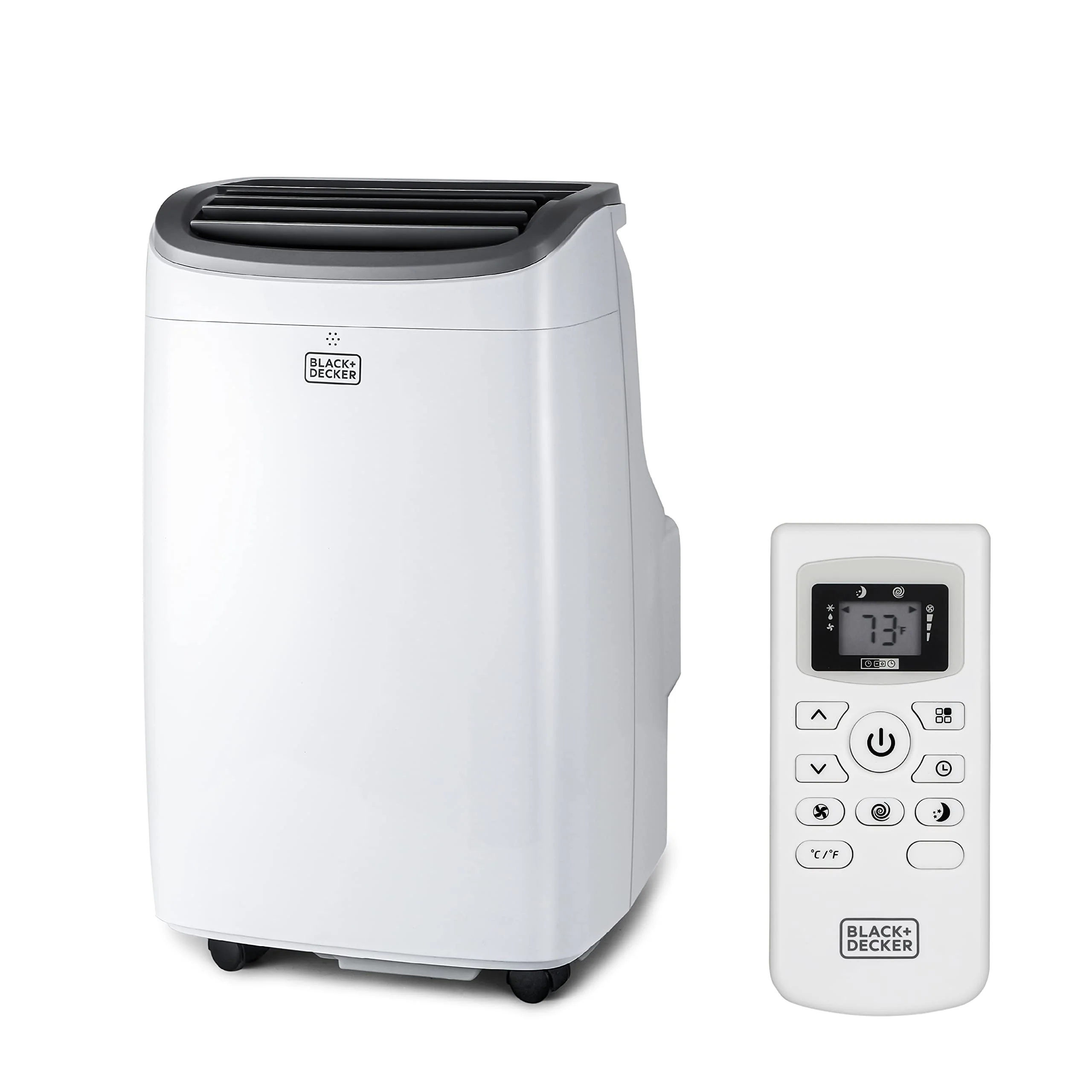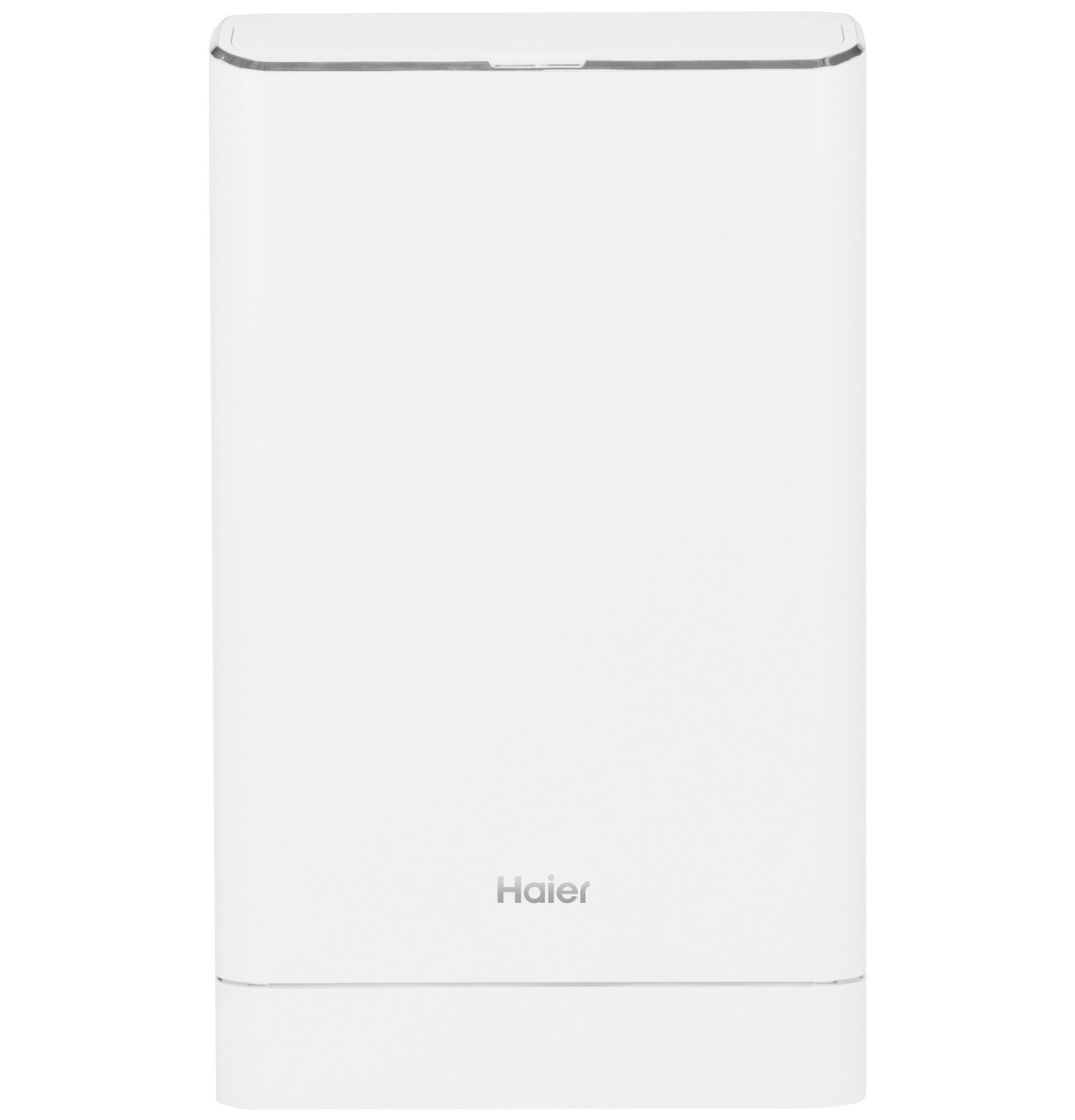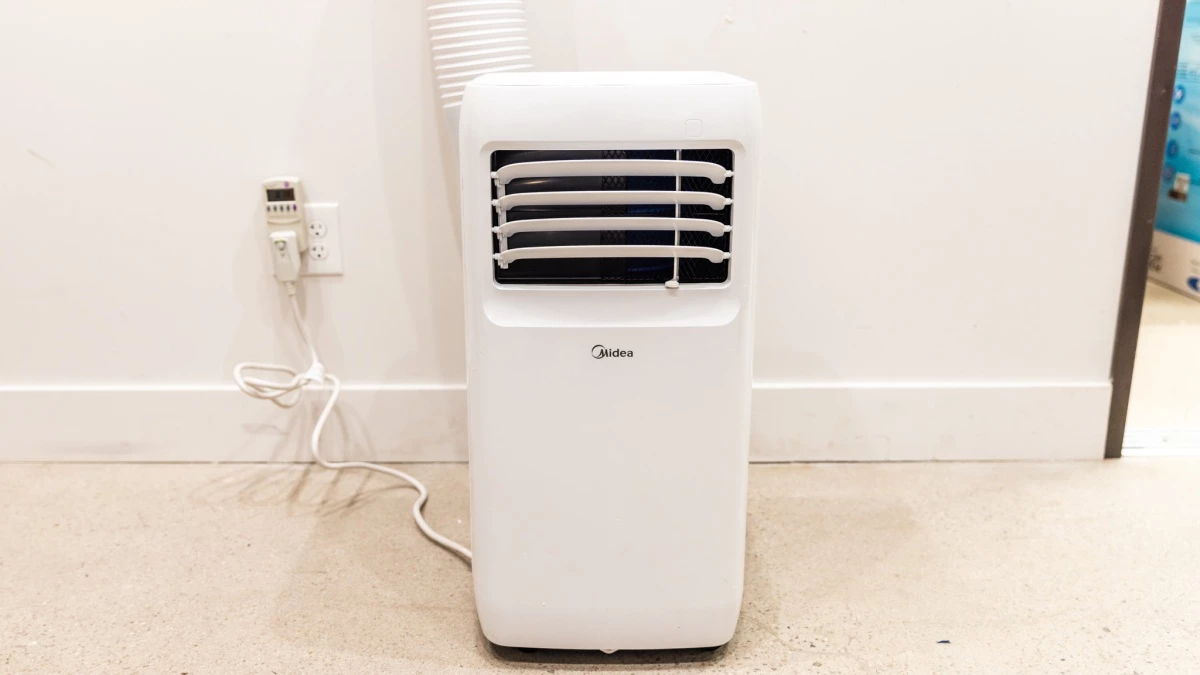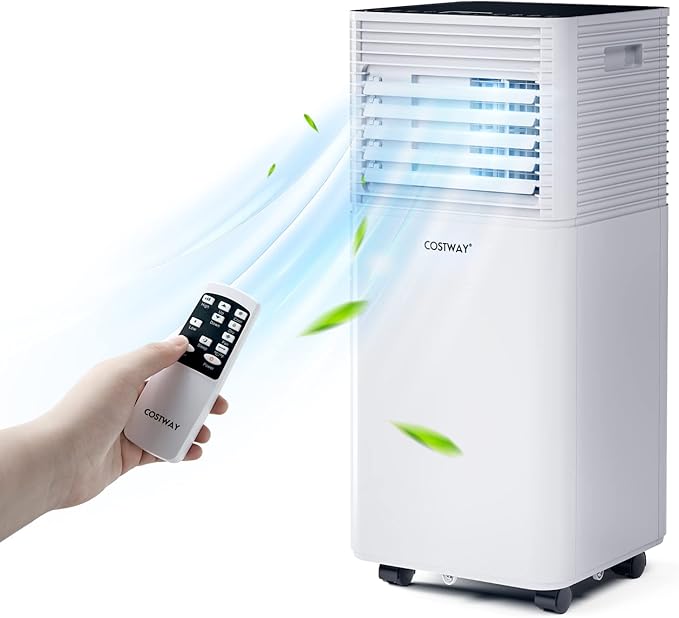5 Best Cheap Room Air Conditioners Portable | Top Picks & Buyer’s Guide
Australia’s summers are long, hot, and often unforgiving, but keeping cool doesn’t have to drain your savings. Cheap room air conditioners portable are a practical way to stay comfortable in apartments, home offices, or smaller living spaces. They’re lightweight, simple to set up, and easy to move from room to room, making them perfect for flexible cooling on a budget.
In this guide, we’ll share the top five models for 2026, plus tips on choosing wisely, avoiding common pitfalls, and getting the most out of your unit. Read on!
5 Best Budget Portable Air Conditioners
After extensive testing, we’ve selected the top five cheap room air conditioners portable for 2025, balancing performance, affordability, and energy efficiency. These units are ideal for cooling small to medium spaces, with one standout option for off-grid flexibility.
1. EcoFlow WAVE 3 Portable Air Conditioner
The EcoFlow WAVE 3 Portable Air Conditioner is a standout option for anyone seeking a versatile portable air conditioner that works both at home and off-grid. Designed for small rooms, RVs, campers, and even boats or cars, it combines powerful cooling and heating with advanced smart features.
Unlike standard budget models, the WAVE 3 can run wirelessly for up to 8 hours when paired with its optional battery, giving it a unique advantage for outdoor and travel use. With app controls, eco-friendly refrigerant, and whisper-quiet operation in sleep mode, this unit is designed for comfort without compromise.
Key Features:
6,100 BTU cooling / 6,800 BTU heating
Up to 8 hours cordless use with optional battery
App-based smart controls with multiple modes
Quiet sleep mode (44 dB)
Eco-friendly R290 refrigerant
Best for: Campers, RV travelers, and small-room cooling with off-grid flexibility.
EcoFlow Wave 3 Portable Air Conditioner
2. Black+Decker BPP08WTB
The Black+Decker BPP08WTB offers strong cooling power in a compact, affordable design, making it a reliable choice for small apartments or bedrooms up to 350 sq. ft. Its 4-in-1 functionality—cooling, dehumidifying, fan, and sleep—ensures year-round usability. What makes it especially user-friendly is the “follow me” remote, which adjusts cooling based on your location, keeping the temperature comfortable wherever you are in the room.
Key Features:
8,400 BTU SACC cooling capacity
4-in-1 design: cooling, fan, dehumidifier, sleep
“Follow me” remote for personalized comfort
Noise level: 48–57 dB
Best for: Small apartments or bedrooms needing simple, affordable cooling.


3. Haier QPCA14YZMW
For those who need to cool a larger area, the Haier QPCA14YZMW is a practical budget option with the capacity to handle up to 550 sq. ft. With a 9,700 BTU SACC rating, it’s well-suited for living rooms, offices, or open-plan spaces. While heavier than smaller models, the included casters make it easy enough to move between rooms. It also offers multiple modes, including dehumidifier and fan functions, plus a 24-hour timer for flexible scheduling.
Key Features:
9,700 BTU SACC cooling power
Cooling, fan, and dehumidifier modes
24-hour timer for scheduled use
Best for: Large living rooms or office areas needing powerful, budget cooling.


4. Midea MAP08R1CWT
Compact but effective, the Midea MAP08R1CWT is built for smaller rooms where space and noise control matter. With 5,300 BTU SACC capacity, it’s perfect for bedrooms, dorms, or home offices up to 150 sq. ft. It includes three operating modes—cooling, fan, and dehumidification—along with a sleep mode that keeps noise levels down to 52–56 dB for restful nights.
Key Features:
5,300 BTU SACC cooling capacity
Cooling, fan, and dehumidification modes
Quiet sleep mode: 52–56 dB
Best for: Bedrooms or home offices where quiet and compact design matter.


5. COSTWAY Portable Air Conditioner
The COSTWAY Portable Air Conditioner is an affordable, feature-packed option for smaller spaces. Delivering 6,500 BTU SACC cooling, it’s suitable for rooms up to 150 sq. ft. and includes four modes: cooling, fan, dehumidification, and sleep. At 55 dB, it runs quietly enough for dorms, apartments, or small bedrooms. Its digital display and remote control add ease of use, while casters and a window kit simplify installation and mobility.
Key Features:
6,500 BTU SACC cooling capacity
4-in-1 functions: cooling, fan, dehumidifier, sleep
Quiet 55 dB operation
Digital display, remote, and casters for portability
Best for: Dorm rooms or small apartments needing a low-cost, easy-to-use unit.


How to Choose a Cheap Portable Air Conditioner That Won’t Disappoint?
When you choose portable air conditioner for home, it’s important to balance cost, performance, and features so you get reliable comfort without overspending. To make the process easier, here’s a clear guide to help you find the right unit for your space.
1. BTU Rating and Room Size
The cooling capacity, measured in British Thermal Units (BTU), must match your room’s square footage. For instance, 5,000–6,500 BTU units are suitable for 150–200 square feet, while 8,000–10,000 BTU units can cool 350–550 square feet. Undersized units will run constantly without cooling effectively, while oversized units cycle on and off too frequently, wasting energy.
To calculate, measure your room’s length and width, multiply for square footage, and use a BTU chart (e.g., 20 BTU per square foot for standard rooms, or 25 BTU for sunny spaces).
2. Energy Efficiency (EER)
The Energy Efficiency Ratio (EER) indicates how efficiently a unit uses power. A higher EER (10 or above) means lower running costs. For example, a 10,000 BTU unit with an EER of 10 uses 1,000W, costing approximately AUD 0.30 per hour at an average electricity rate of AUD 0.30/kWh.
In contrast, an EER 8 unit uses 1,250W, increasing costs by 25%. Check the EER on the product label to estimate long-term savings.
3. Noise Levels
Noise is a critical factor, especially for bedrooms or workspaces. Units with sleep modes under 50 dB are ideal for nighttime use, as they’re quieter than a normal conversation (60 dB).
Check manufacturer specs for decibel ratings at low and high settings, and prioritize models with adjustable fan speeds for quieter operation when full cooling isn’t needed.
4. Portability and Setup
Look for units with casters and a weight under 60 pounds for easy movement between rooms. Most portable ACs require a window venting kit, which should be included.
Dual-hose designs are more efficient than single-hose models, as they don’t pull warm air from outside, but they may need custom ducting for non-standard windows or setups. Ensure the unit’s dimensions fit your space, especially in compact apartments.
5. Additional Features
Features like dehumidification, timers, and remote controls add convenience. Dehumidification is particularly useful in humid Australian climates, as it removes moisture to prevent mould and improve comfort.
Avoid units with unnecessary Wi-Fi features unless you need remote control via an app, as they can increase costs by AUD 100–200 without significant benefits for basic use.
6. Power Options
For off-grid scenarios, such as camping or remote work, some units run from a battery pack or can be topped up by solar panels. They’re ideal where mains power is unreliable; check battery runtime (or combined battery + solar performance) — aim for about 6–8 hours for overnight cooling.
7. Maintenance Requirements
Budget models often require regular filter cleaning or drainage in humid conditions. Self-evaporative systems, which recycle condensation, reduce maintenance but may struggle in very humid environments. Check if filters are washable and how often drainage is needed to avoid unexpected upkeep.
Common Pitfalls to Avoid with Budget Air Conditioners
The budget portable air conditioner can be a smart buy, but a few mistakes can hurt performance and cost you more in the long run. Here’s what to watch out for:
Wrong Size: An undersized unit will struggle to cool your room and waste energy. Always match BTU to room size.
Low Efficiency: Cheap models with poor EER ratings consume more power. A higher EER saves money over time.
Too Noisy: Some units run at 60+ dB, which can disturb sleep or work. Check noise ratings before buying.
Neglected Maintenance: Dirty filters or full drainage trays reduce cooling and may cause leaks. Clean filters monthly.
Bad Venting: Poorly installed hoses let warm air back in. Use a secure window kit or consider dual-hose designs.
Room Conditions: Large windows, poor insulation, or high ceilings increase cooling needs, so make sure to pick a slightly stronger unit if needed.
Conclusion
Cheap room air conditioners portable are a practical way to stay comfortable without overspending, offering mobility, easy setup, and efficient cooling for small to medium spaces. By choosing the right size, checking energy ratings, and keeping up with simple maintenance, you can enjoy steady performance through the hottest months.
With plenty of budget-friendly models now designed for both home and off-grid needs, there’s an option for every lifestyle. For those wanting innovation with flexibility, the EcoFlow Wave Portable Air Conditioner remains a standout choice. Check out today!
*The brands referenced in this article are provided for informational purposes only and do not indicate any partnership with EcoFlow.
EcoFlow Wave 3 Portable Air Conditioner
FAQs
Can I use a portable AC in a room with no window?
Most portable AC units require a vent to release hot air, usually through a standard window kit. If you don’t have a window, you can adapt the exhaust hose to go through a wall, ceiling vent, or sliding door with the right fittings.
In apartments where modifications aren’t allowed, evaporative coolers (swamp coolers) are an option, though they only work well in dry climates and add moisture to the air. Without proper venting, a portable AC will not cool effectively and may overheat the room.
Is a portable AC cheaper to run?
Running costs depend on efficiency, unit size, and electricity rates. Portable ACs with a higher Energy Efficiency Ratio (EER) use less power for the same cooling output. For example, a 10,000 BTU unit with an EER of 10 uses 1,000 watts per hour, costing about AUD 0.30/hour at AUD 0.30/kWh.
The same capacity at EER 8 would use 1,250 watts, costing 25% more. Dual-hose units also cool more efficiently than single-hose models. Properly sizing your AC to the room prevents wasted energy and helps keep bills lower.
Is it safe to sleep in a room with a portable air conditioner?
Yes, sleeping in a room with a portable air conditioner is generally safe if it’s installed and used correctly. Make sure the exhaust hose vents outdoors (don’t block it), leave enough clearance around the unit, and avoid running the AC from an unsuitable extension lead or overloaded circuit. Set a comfortable overnight temperature (NSW Health guidance suggests around 24–26°C for sleep comfort and safety), keep filters clean to maintain air quality, and pick a unit whose noise level you can sleep with. The unit itself does not produce carbon monoxide, but never use a petrol/diesel generator indoors to power it — generators emit CO and must be run well outside and away from openings.